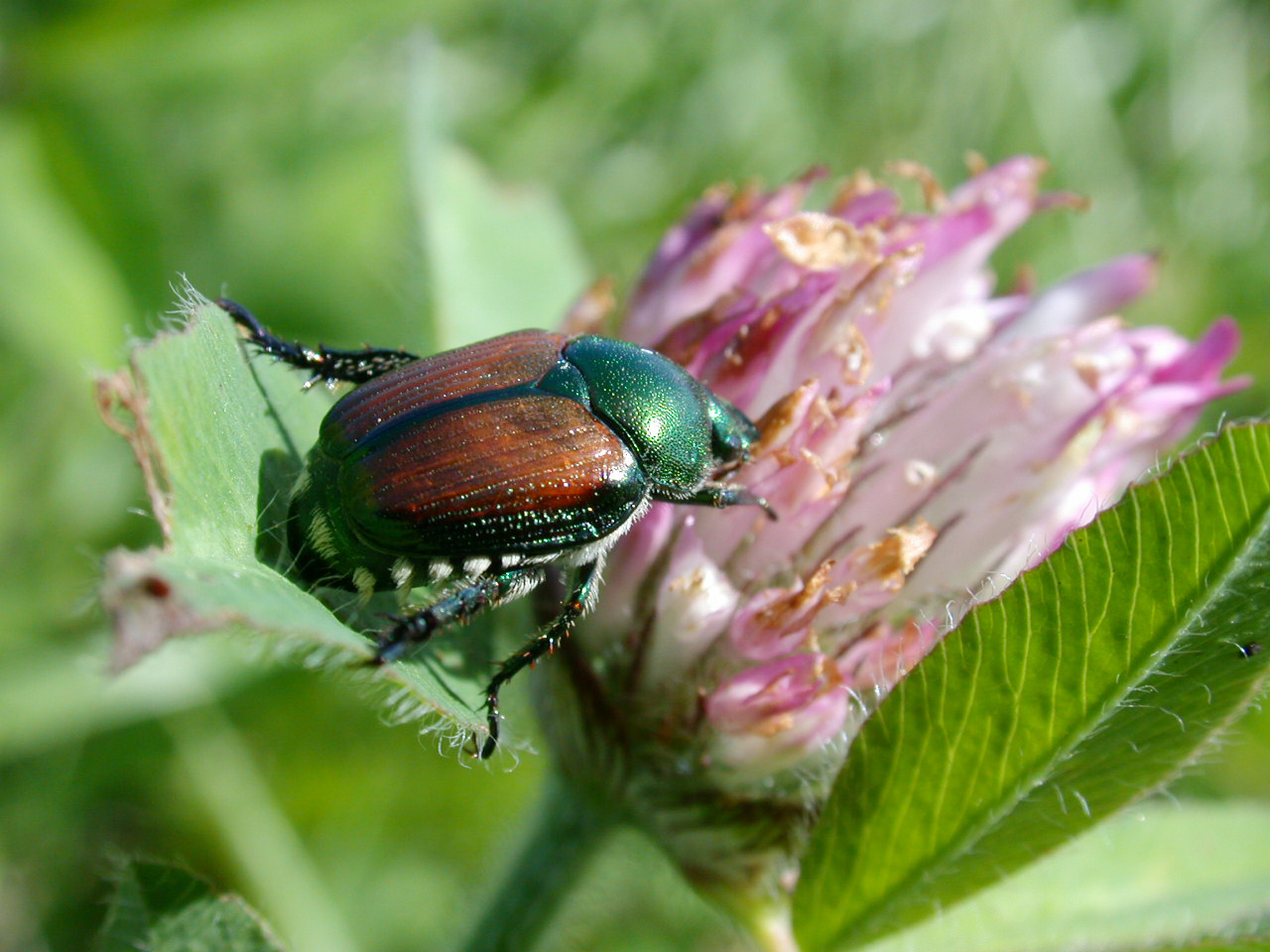Locally, we found Japanese beetle adults on Monday, June 11, in field crops and flying around campus. This is certainly earlier than normal, as we typically think of them emerging more toward the end of June. Many areas in the state are now likely seeing this notorious pest in crops and around the home. It is just the beginning! Not surprising, as our May degree day accumulations were 50-60% above our long-term averages for the month. It may not have felt like it at times, but it was an atypically warm month of May in Indiana.
These adults are the result of eggs laid by female beetles last summer. After these eggs hatched, the grubs immediately begin to feed on a wide variety of roots and decaying organic matter in the soil. This fall feeding is typically not noticed and not economic damage. They continue feeding until cold temperatures prompt them to move deeper in the soil profile to overwinter. Early in spring, the surviving grubs return to near the soil surface to feed, and this is when they cause problems in field crops, turfgrass and other crops. There were questions about how well the grubs overwintered after the very cold temperatures the state experienced in early January…the same cold that ruined our peach crop this season. They were likely not impacted because they can move deep in the soil profile, beyond where the temperature fluctuates much. Now we will have the answer on their survivability as their numbers continue to build over the next several weeks.
Japanese beetles are generalists both as adults and larvae and will feed on more than 350 different species of plants. As adults they are especially fond of roses, grapes, smartweed, soybeans and other legumes, corn silks, flowers of all kinds, and overripe fruit. Beetle damage to cultivated crops is usually minimal and defoliation (leaf removal) on soybean typically looks much worse than it is, and is often most severe along borders, where “drive-by scouting” tends to occur. The beetles often congregate in several areas of a soybean field, feeding on and mating in the upper canopy. The beetles’ iridescent, metallic color also frequently catches the attention of those doing “windshield” field inspections. Closer inspection will often reveal that weeds (e.g. smartweed) have made fields even more attractive to the beetles. It has been years since we heard of treatable levels of adults in corn or soybeans, but stay vigilant. Happy Scouting!

Japanese beetle season returns.


